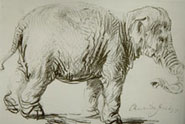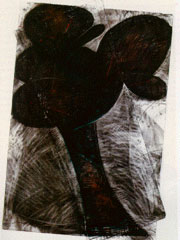|
|
| What is "Form"? |
|
 |
We can consider form to be the overall physical attributes of a work's structure. That is, the overall relationships that constitute a work itself. "Form" among three-dimensional objects will include volumetric space (both positive and negative), which means void as well as mass/weight, and a relationship of interior to exterior.
In two dimensions, form might specifically be considered as shape. However, form may also refer to the work as a whole and the relationship among shapes within it. 2D form also refers to a work as an object: is it a drawing on paper or on some other surface, a painting, a digital image, or some other type of 2D representation?
|
|
 |
|
Rembrandt
|
|
| What does Form do? |
|
. |
Form is the outward appearance of a work and provides the "whole" impression perceived by viewers. You might also think of form as a type of composition around and through which the eyes move and the other senses are stimulated.
Form can also be illustrated by different "styles."
|
| Representational- |
"real," literal |
| Stylized- |
idealized or very simplified real |
| Abstract- |
interpretations of real-life images emphasizing "essence" |
| Non-objective- |
non-representational form, i.e., no relationship to real objects, emphasis on aesthetic "pure" construction with art elements |
Form is capable of expressing nuances of implied movement, e.g., static or dynamic.
|
|
|
 |
|
Murray
|
|
|
|
 |
|
|
|
|
|

